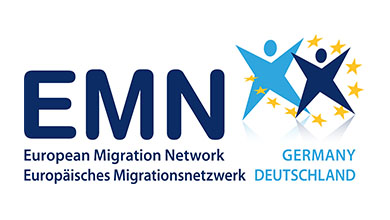EMN Synthesis Report: Attracting and Protecting the Rights of Seasonal Workers in the EU and United Kingdom , , EU-wide comparative report of the European Migration Network on 25 Member States

How are seasonal workers attracted and their rights protected in the EU Member States and the UK? What is the profile of seasonal workers from third countries in the EU? Do Member States and the UK place specific efforts on attracting seasonal workers to address labour market needs? What measures did Member States introduce to mitigate the effects of the COVID-19 pandemic?
According to a study by the European Migration Network (EMN), many countries aspire to attract seasonal workers from non-EU/EEA countries to fill temporary, cyclical labour market shortages, typically in agriculture, tourism, and manufacturing sectors. Protecting the rights of seasonal workers is one of the objectives of the Seasonal Workers Directive (EU), adopted in 2016, which provides for equal treatment of third-country nationals, but also gives Member States power limit their access to certain rights.
Profile of seasonal workers
The study found that seasonal workers mainly consist of young adults, who are mainly employed in agriculture, tourism and manufacturing. They mostly originate from the neighbouring regions of the Member States receiving them, with Ukraine being the most frequent country of origin. Seasonal workers can be crucial in filling labour market shortages which is why several countries have measures to attract them, including simplified procedures, shortening of processing times, as well as cooperation with third countries. The number of workers admitted under the directive ranged from around 300 in Latvia to more than 46 000 in Poland in 2019.
Attraction of seasonal workers to address labour market needs
In most Member States seasonal workers are important to fill shortages in certain sectors and several Member States have measures in place to attract seasonal workers. The main strategies in place to attract seasonal workers from third countries include shortening or simplifying the application procedure for seasonal workers, shortening the processing time of the applications, and developing placement and cooperation agreements with third countries. Most Member States have measures in place to facilitate the re-entry of seasonal workers from third countries.
Protection and rights of seasonal workers and procedural safeguards
The analysis shows that in several Member States, in line with possibilities granted by the directive, the access of seasonal workers to equal treatment is restricted, in particular, regarding unemployment benefits and family benefits. The definition of adequate housing for seasonal workers also varies across Member States. Whilst the monitoring of working conditions takes place across the Member States, still, some cases of abuse might go undetected, notably due to limited awareness of seasonal workers about their rights.
Consequences of the COVID-19 pandemic
The study also briefly outlines the immediate consequences of the COVID-19 outbreak for seasonal workers, and measures taken to by Member States to mitigate its effects. The specific measures include extension of authorisations for seasonal workers already present in the country, lifting of travel restrictions, but also a mobilisation of domestic labour to fill the gaps. In some Member States seasonal workers have gained more visibility and recognition from the public during the pandemic.
The EMN Synthesis Report is available in English only. The German EMN study as well as a short version of the findings on EU level may be found in the EMN Inform and the EMN Flash. They are available in German and English (see "Downloads" under "Further information").

